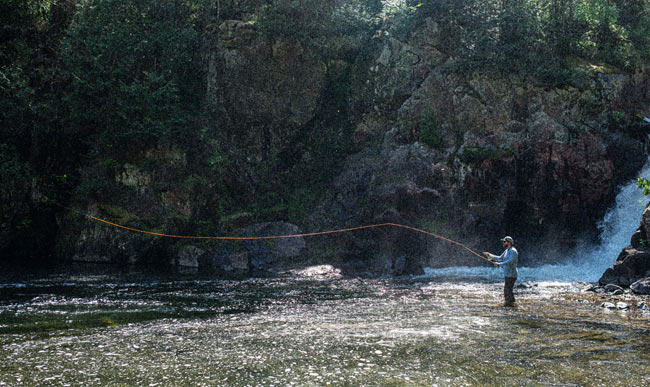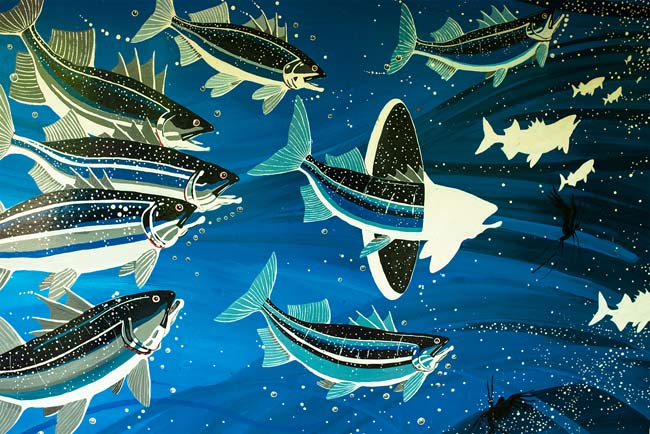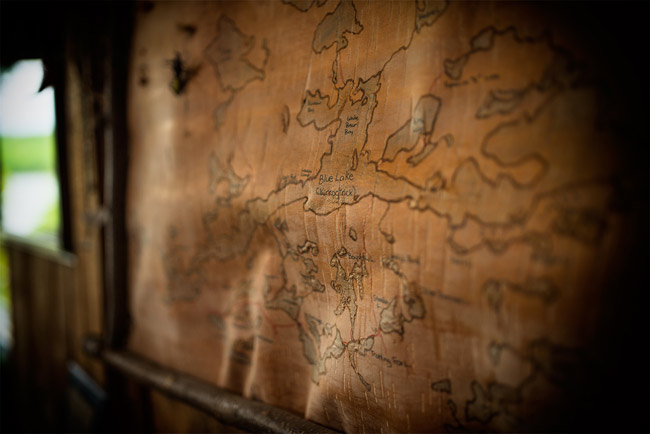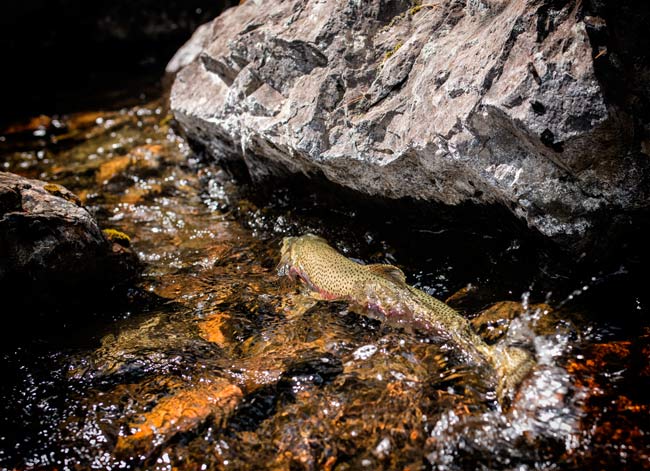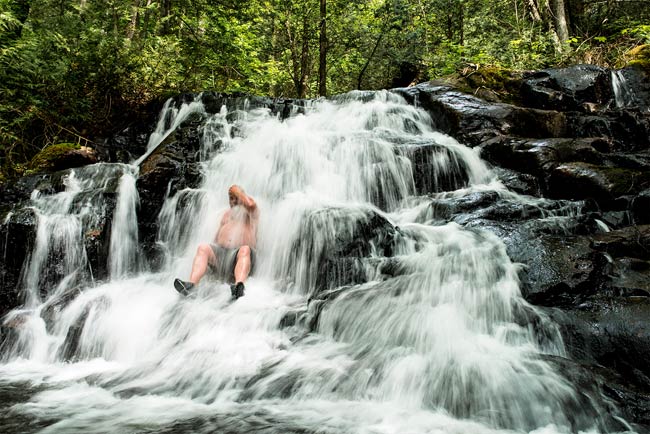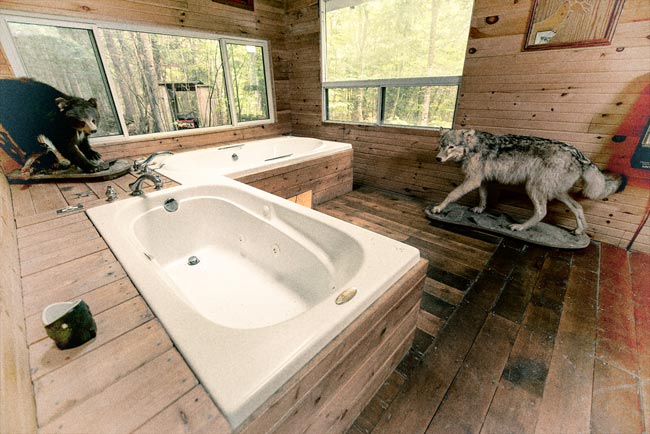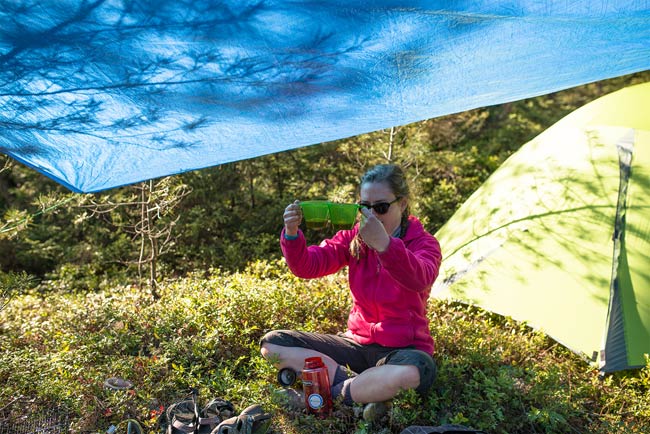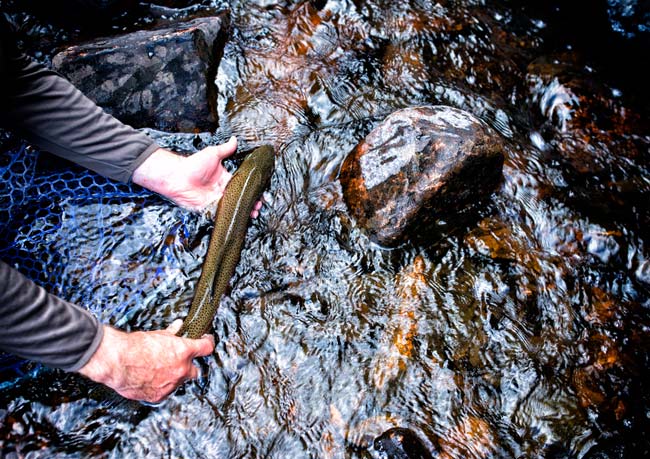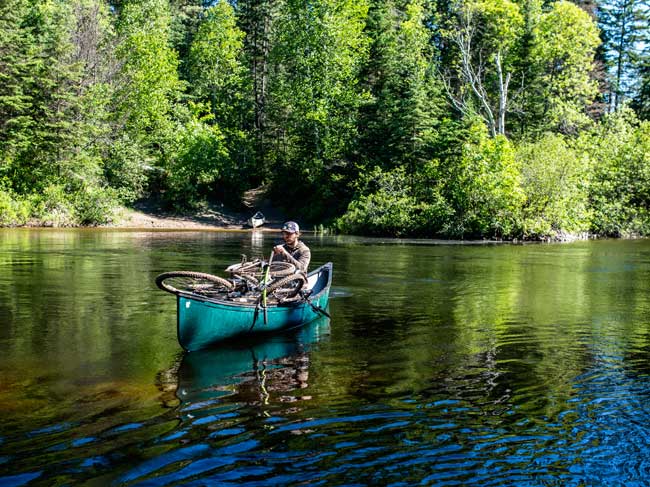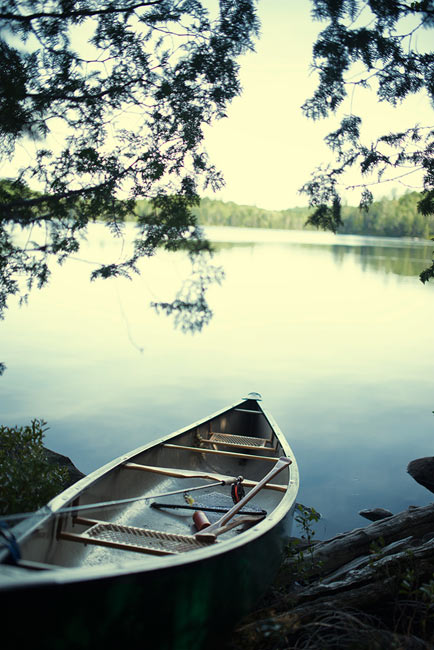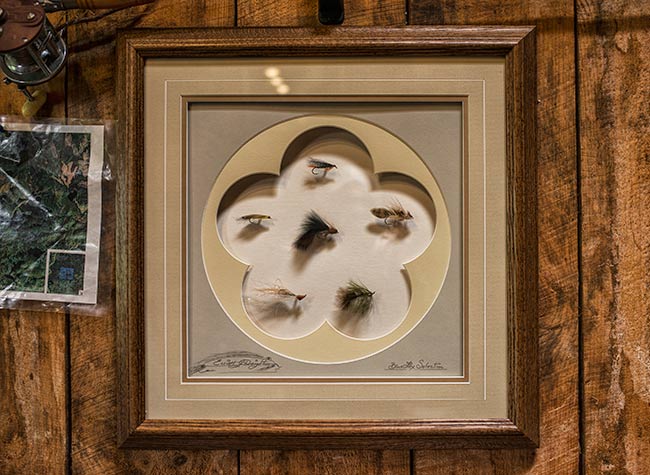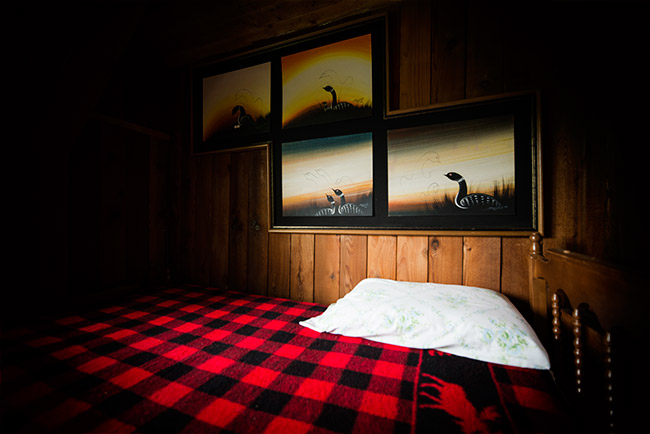Photographer Photo Essay: Blue Lake Country
I’ve been exploring Ontario for about 20 years now, always in a canoe and most often in the far Western portion of the province in pursuit of walleye, northern, smallmouth and the occasional lake trout. This past winter I became intrigued by the Algoma district just north of Sault St. Marie, with its clear blue lakes and abundance of char and rainbows. At 7 hours away, Algoma was within striking distance of my hometown of Ann Arbor, and I had it on good and abundant word that some truly giant brook trout swam the remote back country lakes of the Blue Lake system. So I booked a trip and brought along my girlfriend for her very first back country canoe loop (she loved it).
The following images were collected in and around Blue Fox Camp, located on Blue Lake, otherwise known as Lake Kirkpatrick. Once the heart of a major north country logging operation, the camp now hosts primarily trout anglers, moose hunters and paddle enthusiasts, though there are also rock-climbing and snowmobiling possibilities for those so inclined. Using the main camp as a base, the modern voyager has access to a system of 15 or so lakes, some large, some small, all deep. Taken together the lakes offer great fishing for lake trout, brook trout and rainbows, though the great depths of even the smaller lakes mean that fly anglers should focus their efforts early and late in the season when fish are shallow and accessible to the fly—generally from ice-out to the end of May and again in September. Omnivorous anglers will have good fishing for all three species year round—including through the ice.
This century old log flume at the east end of Blue Lake once oversaw thousands of white pine as they sluiced downstream. Now, it bears witness to spawning rainbows pushing up.
Painted on the side of the camp sauna by a local indigenous artist, this mural speaks to the sense of transformation I always feel when traveling by canoe through Ontario.
Blue Fox Camp’s heritage as a turn of the century logging operation is apparent in everything from the old log flumes at the end of the lake to the antique logging tools that decorate camp. Above, a birchbark map in the cook house provides an overview of the area. The rich patina is the product of several hundreds—perhaps thousands—of fish fries.
The Blue Lake system is home to naturally reproducing rainbows, lake trout and brook trout, making it a rare environment even within Canada and earning the official designation of fish sanctuary.
Of course, there’s much more to do than fish trout and hunt moose. Blue Fox staff hydrotherapist Dan Nash knows all the best places to swim and soak amongst the area’s many waterfalls and plunge pools. Blindingly cold and roaringly loud, a few seconds in the thick of the flow is as cleansing an experience as I’ve ever had. Dan is usually too busy showing folks around to fish much. In his own words: “Seeing people fall in love with this area is my trophy fish.”
With no wi-fi or cellular network in sight, the back country lakes are a perfect place to read, think and meditate. For six full days my girlfriend and I saw no none but each other and several pairs of loons, though the wolf and moose tracks along the portages suggested we weren’t as alone as we thought.
Never underestimate the persuasive power of a wood stove sauna, particularly one guarded by a timber wolf. After a few cool rainy days in the back lakes, the only thing that convinced my body to relax again was the steady, relentless heat of a wood stove.
Good fences may make good neighbors, but it’s good whiskey that makes good canoe camps. Interpersonal harmony requires careful parity of pour.
One of many wild rainbows from the blue waters of Blue Lake.
One of the things that attracted me to Blue Fox Camp in particular was the diversity of ways to get there. Come by float plane, by ATV, or by mountain bike. If you’re coming in via the logging trails for the first time an escort is advised, since it’s easy to get turned around amidst the lakes. If you do choose to bike in, spare tubes, proper conditioning and a basic knowledge of bike repair are essential.
Canoe country days are long and both canoe and canoer benefit from a mid afternoon break.
Though it takes a bit of know-how and patience, the boreal forest provides nourishment to those who seek it. In spring and early summer pale spruce tips provide a welcome dose of vitamin C. Harvest selectively, since each bud represents a future branch. And be sure to chew the tender bright buds at the bottom of your cup.
A sextet of Blue Lake classics for the goliath brook trout that haunt the back lakes.
Perhaps no other bird captures the essence of the boreal north better than the loon, whose evening calls persist in memory long after the trip ends. Seasoned canoeists hear them in the deep heart’s core.
Peter Morse
Richard Schaaff
